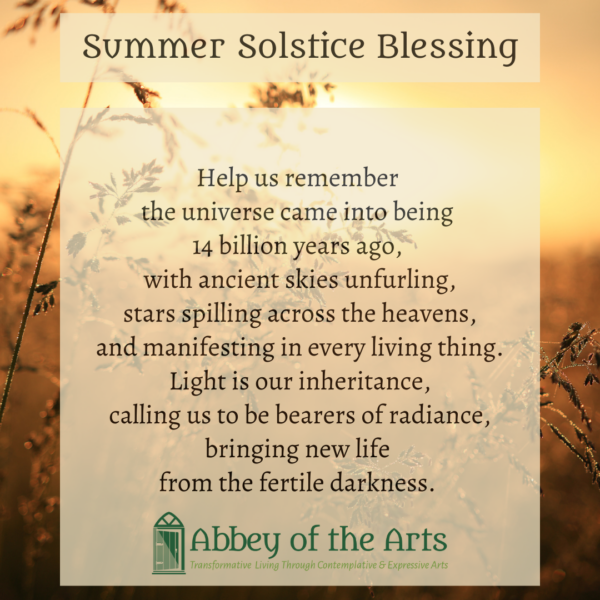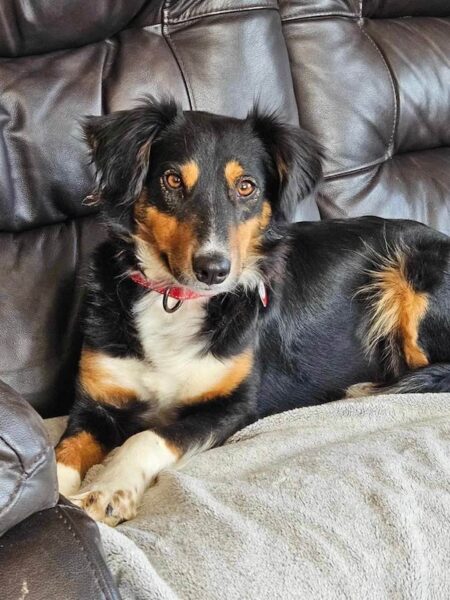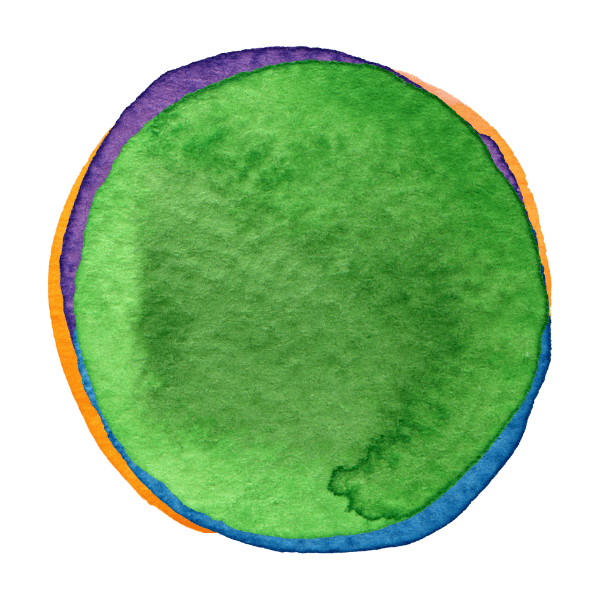When one of my readers suggested Mary Kolb for the Sacred Artist Interview series I thought it might be fun to explore an “artist of the inner life” instead of my usual focus on visual artists, poets, and musicians. I love that phrase, after all, are we not all invited to co-create the architecture of our inner selves? And in that dynamic process we also help to create the world. Read on for more wisdom from Mary and her insights into an intriguing and revelatory process.
___________________________________________________________
 I consider myself an artist of the inner life. I teach self-awareness and growth tools developed by Personality and Human Relationships (PRH). Of course, I also practice what I teach– ongoing self-discovery. By becoming aware of myself at all levels – body, feelings, thoughts, and essential identity – I grow more able to live in a way that expresses my gifts fully, freely, and with joy. It is the practice of exploring the dynamics of my inner world that enables me to come into harmony with my whole self… which is one and the same with aligning myself with the movement of Spirit. In this inner alignment I discover that I must offer my gifts in service of others.
I consider myself an artist of the inner life. I teach self-awareness and growth tools developed by Personality and Human Relationships (PRH). Of course, I also practice what I teach– ongoing self-discovery. By becoming aware of myself at all levels – body, feelings, thoughts, and essential identity – I grow more able to live in a way that expresses my gifts fully, freely, and with joy. It is the practice of exploring the dynamics of my inner world that enables me to come into harmony with my whole self… which is one and the same with aligning myself with the movement of Spirit. In this inner alignment I discover that I must offer my gifts in service of others.
 Are you rooted in a particular faith tradition?
Are you rooted in a particular faith tradition?
When I say I was raised Catholic, I feel I am not being quite accurate. My parents were both converts to Roman Catholicism. So some aspects of Catholicism came through, especially an emphasis on community, conscience, and social justice. Others– such as saints, rosaries, and confession – my parents never quite warmed up to. In my reading and exploration as a young adult, I discovered my kinship with Teilhard de Chardin, as well as Thomas Merton and Hildegard von Bingen. These are the roots that really “took”: the mystical, the visionary, and the faithfulness to one’s unique life-path. Over time, I have come to recognize the common truths in many religions and belief systems. I now embrace more universal language for my experience of spirituality, and I listen beyond language as others express theirs.
What is your primary art medium?
My “medium” is a form of written self-reflection. The PRH Self-Analysis method helps me access the wisdom and creativity in my positive core, my being. PRH Analysis is a written method of focusing on bodily sensations that have some psychological content, so as to release energy and information to help me grow and heal. This writing is not a product in itself, and it is rarely as enthralling for someone else to read as it is to write! But this process of self-exploration is a means to accomplish the real art… of bringing consciousness and peace into my daily interactions, choices and service to creation.
This writing meditation practice is not a visual art, but the content can often be conveyed in nature images, such as these captured by my husband Kurt Kolb. When I use images like these in workshop materials and flyers, in a regional PRH newsletter, or in my website, they communicate the deeper life beneath my words. To me, they speak of hope, wholeness, beauty, and of being part of something bigger than myself.
 How do you experience the connection between spirituality and creativity?
How do you experience the connection between spirituality and creativity?
For many years, my creativity seemed rooted in a bittersweet longing. This was the state that would thrust me into writing poetry, for example, and it was also what seemed to settle into me when I drew, sewed, or engaged in other creative activities. I came to believe that creativity was only birthed out of pain.
So it has been a great surprise to find creativity increasingly bubbling up as I come more into harmony with myself. I have had to expand my understanding of what creativity is –beyond art and crafts– to encompass a fluid and responsive way of receiving inspiration in ordinary aspects of life. Crafting a workshop, setting a theme for the newsletter, expressing my inner world – all potentially involve this bubbling up, which I recognize as the place in me where the breath of Spirit moves.
 What role does spiritual practice have in your art-making?
What role does spiritual practice have in your art-making?
The act of moving inward is an act of faith. When I teach self-discovery methods, workshop participants often face apprehensions that, deep inside they are not good. Others fear that they have no inner resources or wisdom to discover. Moving past these apprehensions requires a stance of humility (accepting their not-knowing) and gentle receptivity. It takes courage to venture into the unknown within. Only through repeated experience have I been able to develop trust that the Spirit or Life will meet me when I open inward. Building this path inward is, for me, both the spiritual practice and the art.
What sparked your spiritual journey?
As a teenager, I flirted with atheism. It was a way of making sense out of all that was painful, unjust, and deadening in my life and in the world. One morning on the way to school, I was immersed in the despair that atheism called up in me. Suddenly, I realized that I didn’t want to live that way – And in that moment, I chose to begin living as if there were a God. This decision launched my spiritual journey, a decades-long process of feeling my way blindly toward “the more” which is drawing me.
What sparked your artistic journey?
I have been highly attuned to my inner experience for as long as I remember. In high school, I puzzled over the way my classmates seemed caught up and satisfied with what was happening outside them – sports, parties, and so on. I had to face the reality that, for many, looking for the meaning and purpose in life was not hugely important. For me, though, it never felt like a choice to be oriented inward. I have only recently come to feel grateful for the joy that it has given me to be created with this interior gaze.
 Do you have a particular process you use when entering into your creative work?
Do you have a particular process you use when entering into your creative work?
Yes, I use the process I mentioned above, called PRH Analysis. This is what it entails:
Exploring my inner terrain begins with becoming aware of my body in the moment. Settling into my body, I begin to “tune in” to the quiet, resonant intuitions and promptings of my deep consciousness. From here, I can discern in which direction I am being led or prodded by the Life in me in that moment. Sometimes the invitation is to allow or embrace something uncomfortable or even painful. Other times there is a gentle persistent sense of peace or happiness that is my nourishment for the day. Still other times, I need to get clearer about a situation that is confusing or where I need to make a decision.
Once the direction is set, I take time to identify which current sensation is attracting me. I allow this sensation to fill my awareness, and begin to try on words to name it. I write, describing all that is in the sensation, including images, associations, words, bodily reactions, and more. If I am able to make this description while remaining in close contact with the sensation, new insights will emerge.
How does your art-making shape your image of God?
As I explore my deepest identity – the ways of being that feel most essentially “me”, the activities and relationships that feel most meaningful to me, and the people, values and settings that most awaken life in me – I discover that I am imbedded in Transcendence. I am left with no doubt that God is personal, celebratory, and all-inclusive.
___________________________________________________________
Much gratitude to Mary for sharing these insights. I have long believed that the creative arts were a doorway to the bigger art of living (my previous blog was called “Sacred Art of Living” to reflect this belief). Mary says it so well when she states: “this process of self-exploration is a means to accomplish the real art… of bringing consciousness and peace into my daily interactions, choices and service to creation.” Our art and creativity are always in service to something much bigger than ourselves. I have also experienced that creative flow repeatedly in my own teaching work. And I love this definition of creativity: “to encompass a fluid and responsive way of receiving inspiration in ordinary aspects of life.” So much rich material for reflection on the intersection of creativity and spirituality. Learn more about PRH at Mary Kolb‘s website.
___________________________________________________________
** Visit this week’s Poetry Party! **
-Christine Valters Paintner at Abbey of the Arts:
Transformative Living through Contemplative & Expressive Arts







3 Responses
p.s. i also found it quite interesting to see that she is paired with a photographer who can help articulate visually what she may not be able to say verbally.
a woman after my own heart! although i do not have an official name like “PRH”, i found the process that mary described much like that which i follow. not considering myself to be much of a visual artist (although i do love the process), this was fun to read and consider that maybe all of those scribblings i pour into my morning pages each day are a form of art. :-)
Very interesting interview and I liked the slightly different direction for these interviews.
I think creativity can come “bubbling up” from both pain and harmony. Our deepest creativity, as this interview explores, is beyond paints and words and other externals, although it may well include them and they are often necessary to the deeper understanding.
(And Christine, one of the great gifts of the Enneagram Four type is of course that profound, deep creativity encompassing the whole of life :-))